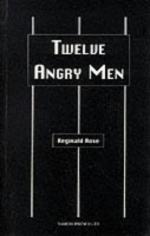
|
| Name: _________________________ | Period: ___________________ |
This test consists of 5 multiple choice questions, 5 short answer questions, and 10 short essay questions.
Multiple Choice Questions
1. What does Act iI suggest about the reliability of some witnesses in a trial?
(a) They may be well-intentioned but unreliable.
(b) They can be influenced by personal experiences with criminals.
(c) They are prone to confusion when questioned by legal experts.
(d) They want to be famous.
2. How do some members of the jury respond to those who disagree?
(a) With ostracism and ridicule.
(b) With an open mind.
(c) With contradictions.
(d) With additional questions.
3. How old is the man who gives evidence about the events he heard from his room?
(a) 80.
(b) 62.
(c) 75.
(d) 65.
4. How does the progress of the discussion in Act II affect the behavior of the group of jurors?
(a) The jurors begin to take the defendant more seriously.
(b) As a group, the jurors develop insights that they could not have individually.
(c) The jurors continue to hurry towards a conclusion.
(d) The jurors begin to listen to Juror Eight.
5. According to the juror who used to live by the el train, how long would the train take to pass a particular point?
(a) About 15 seconds.
(b) About 10 seconds.
(c) About 5 seconds.
(d) About 20 seconds.
Short Answer Questions
1. How do the jurors try to get an accurate estimate of the time of the events described by the old man?
2. Where was the old man witness when he saw the defendant running down the stairs?
3. Which juror accuses the juror who is adamant that he will not see the defendant set free of wanting to be the defendant's executioner?
4. What does Juror Three convey to the jurors by his insistence of the defendant's guilt?
5. Of what is Juror Eight accused by an angry juror after others begin to change their votes in Act II?
Short Essay Questions
1. What do the events of Act II demonstrate about the group and about the influence of Juror Eight?
2. How does the writer use Act II to establish Juror Three and Juror Eight as the antagonist and the protagonist respectively?
3. Referring to events in Act II, track the process by which Juror three is established as the antagonist.
4. What important contributions does Juror Nine make to the deliberations in Act II?
5. How and why do the discussions of the old man and the alleged threats made by the defendant affect one of the jurors?
6. As the jurors contemplate the evidence given by the woman across the street, how does a comment from Juror Eight complicate the discussion?
7. After the uproar following Juror three's accusation about which juror changes his vote in Act II, what do the jurors proceed to do?
8. How do the jurors seek to verify some of the old man's testimony?
9. Identify the major themes illustrated in Act II, and give brief explanations of how each theme is brought out.
10. How do the tone and mood of the play vary as Act II develops from the result of the second vote to the taking of the third vote?
|
This section contains 1,772 words (approx. 6 pages at 300 words per page) |

|




